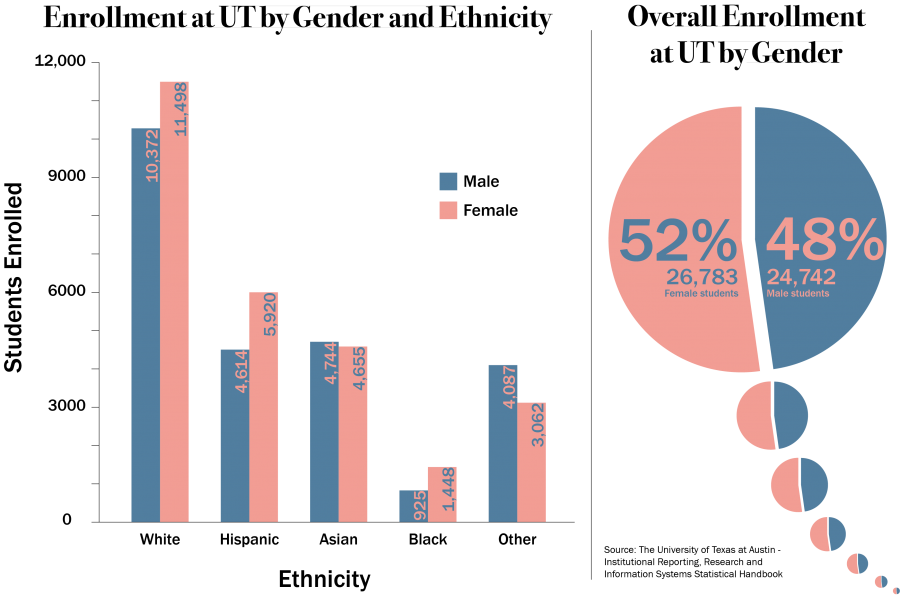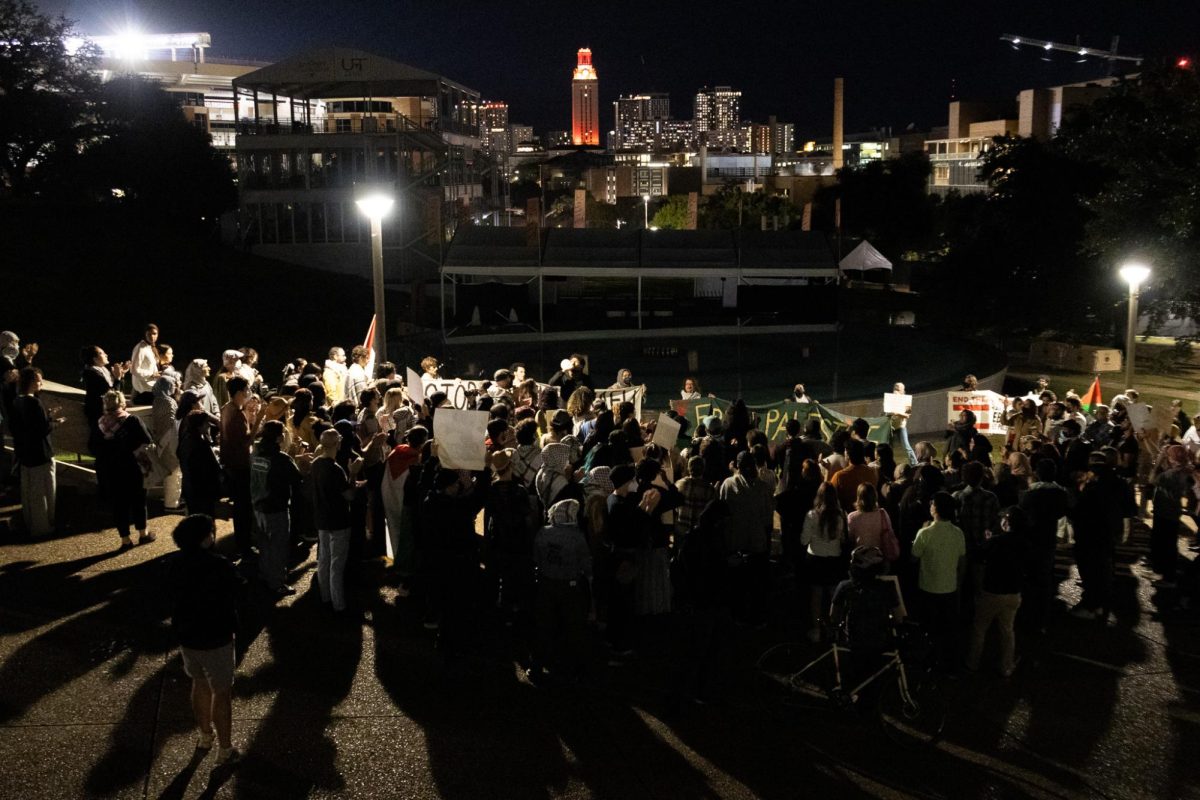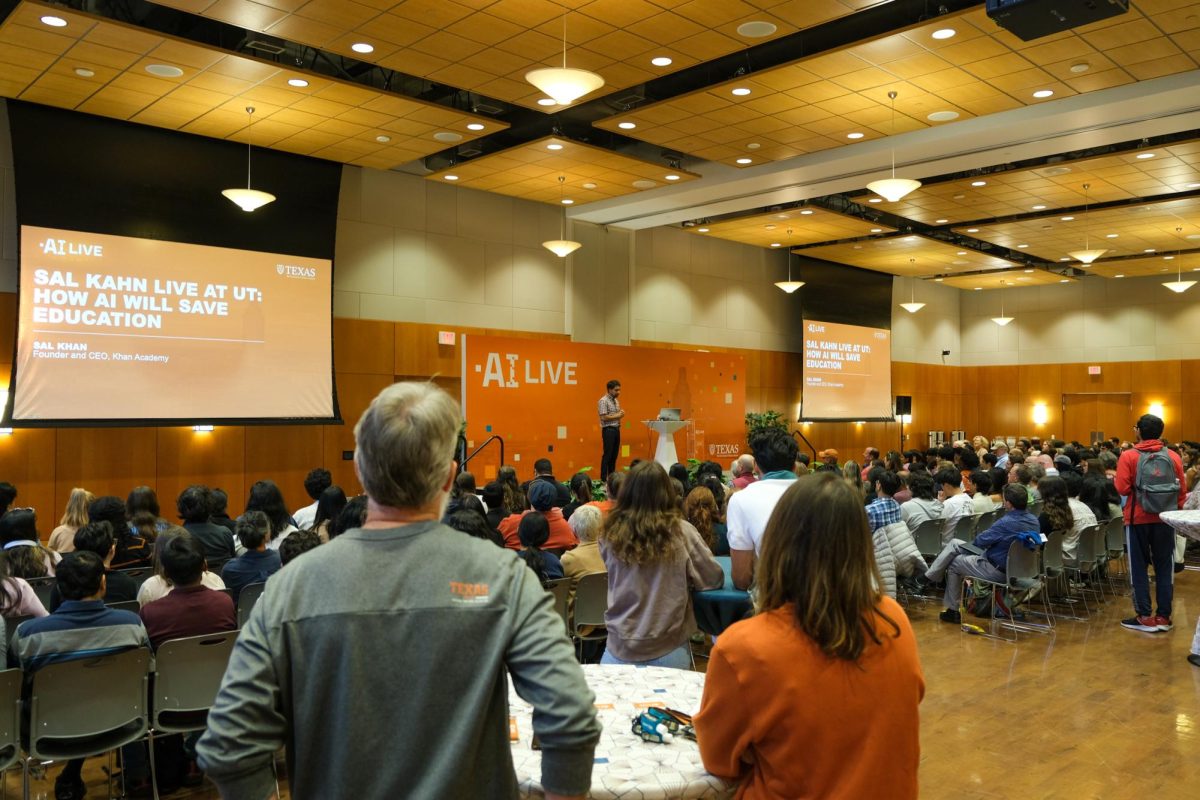A Texas higher education official is raising concerns about the underrepresentation of college males in Texas, but the UT community doesn't feel the same way.
Raymund Paredes, the leader of the Texas Higher Education Coordinating Board, which provides leadership and coordination for Texas universities, recently said male students are becoming uncomfortable with the growing number of females at Texas universities. During the University of Houston System meeting in November, Paredes said this is trend is creating difficulties for male students, especially minorities.
Using data from the Texas Higher Education Board, Paredes highlighted the fact that male students in Texas only earned 62,211 degrees or certificates from four-year universities, compared to the 82,700 degrees earned by Texas female students in 2016.
“This is a situation that is unsustainable,” Paredes said. “We’re getting to the point where males feel uncomfortable on some college campuses.”
Females first began outnumbering males across American universities in the 1970s, according to Forbes. But The Texas Higher Education Board has reported increasing underrepresentation of males at Texas universities since 2014.
Rachelle Hernandez, UT’s senior vice provost for enrollment management, said UT has kept an eye on these statewide and nationwide trends, but the University has not seen the same decreases.
“If you were to pull up data for other institutions, you would see institutions that have greater gaps and significant enrollment changes in the last years,” Hernandez said. “The gap here isn’t the same.”
This fall, 52 percent of UT students are females, slightly outnumbering male students. But the University’s admissions office said male and female enrollment has remained at similar numbers for years.
In 2014, the Pew Research Center reported more females enrolling in college across all races nationwide. But some higher education officials like Paredes are increasingly concerned that as more females, regardless of race, enter college, black and Latino males will fall behind.
There are 1,448 black female students at UT this fall, but only 925 black male students, according to the University’s statistical handbook. Among Hispanic students who enrolled this fall, 5,920 are females and 4,614 are males.
For students like JoVante Starling, a biochemistry and African diaspora studies junior, having more females at UT can be overwhelming when trying to join social or professional student organizations, but it is not something that bothers him or hurts him academically.
“Trying to join social organization and looking for that male comradeship, at times you’re not going to find it,” Starling said. “But it’s just something we have to get over. We men have been comfortable our whole lives.”
Being the only black male student in some of his classes science is what makes attending UT sometimes hard for Starling.
“It’s kind of uncomfortable and you have to look at familiar faces,” Starling said.
For Starling, the problem of underrepresentation of minority males at universities starts before students even step foot on campus.
“I don’t think teachers and principals in high school and middle school show college enough to minority men,” Starling said.
UT established a mentoring program for local black and Latino males high school called Project MALES in 2010. Mike Gutierrez, Project MALES coordinator, said the University tries to reach out to all demographics.
“I definitely think the University outreach programs want to reach out to both females and males,” Gutierrez said.


















